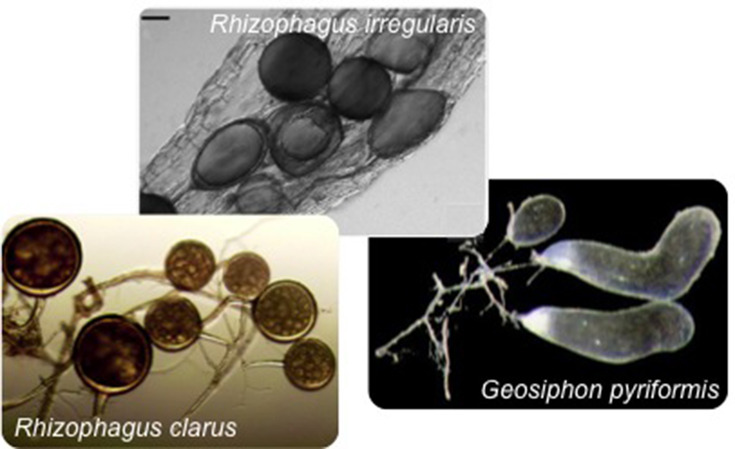Model organisms
Experimental work with arbuscular mycorrhizal(AM) fungi is complicated by their obligatory biotrophic life style. Our main cultivation system are in vitro co-cultures with root organ cultures (ROC). These are Agrobacterium rhizogenes-transformed plant roots growing in Petri dishes. Depending on requirements we are using roots from either chicory, carrot, or Lotus japonicus.
Arbuscular mycorrhiza fungi (AMF)
All arbuscular mycorrhiza fungi belong to the Glomeromycota (Fig. 1).
Figure 1: Phylogeny of Glomeromycota (Young 2012, New Phytol 193: 823-826)
Our AM fungus model systems (Fig. 2) are:
- Rhizophagus irregularis (previously called Glomus irregularis or Glomus intraradices), the most widely used AM fungus whose genome sequence was recently published;
- Rhizophagus clarus (previously called Glomus clarum), closely related to the model AM fungus R. irregularis; one of the few AMF that can be easily cultured in vitro;
- Geosiphon pyriformis, a rather unique AM fungus forming symbiosis with cyanobacteria
Figure 2: Our AM fungal model systems
Other fungal and plant model systems
Figure 3: For functional characterization of genes from AM fungi we are using the baker's yeast
Saccharomyces cerevisiae, tobacco (Nicotiana benthamiana) and the legume Lotus japonicus.





